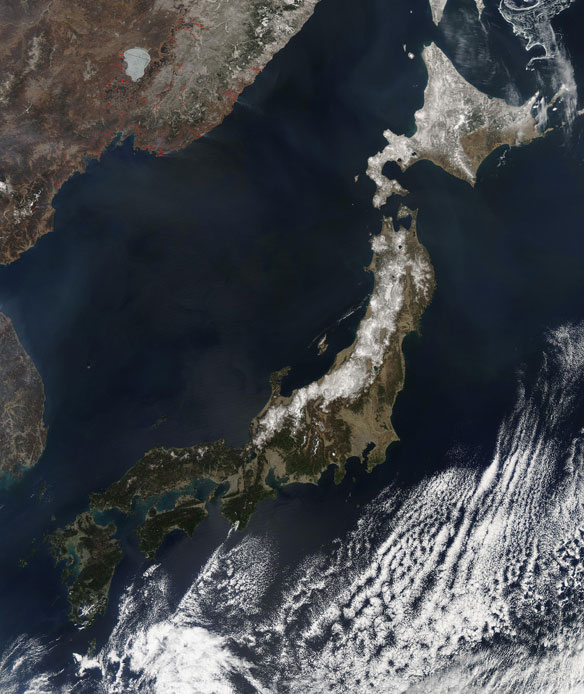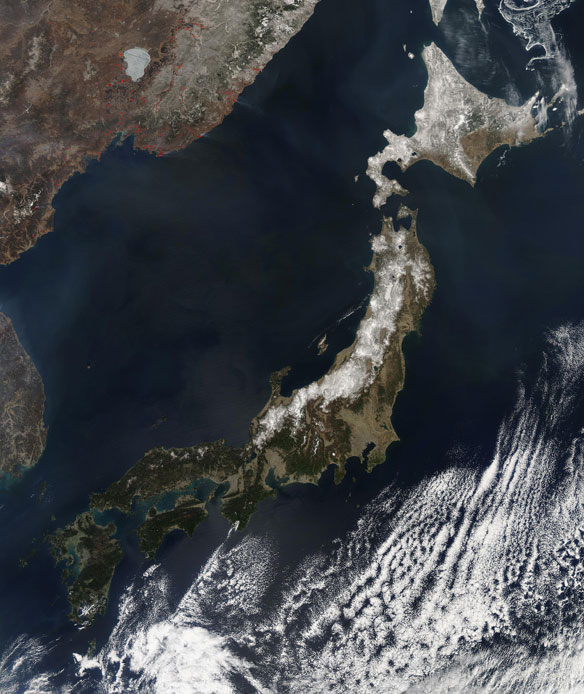
Photo source: NASA Goddard/MODIS Rapid Response Team
Excerpts; Our Amazing Planet
The giant earthquake that struck Japan this year not only shook the Earth, but also rattled the highest layer of the atmosphere, scientists find. This research could lead to a new type of early warning system for devastating tsunamis and earthquakes.
The magnitude 9 quake that struck off the coast of Tohoku in Japan in March unleashed a catastrophic tsunami, ushered in what might be the world’s first complex megadisaster and set off microquakes and tremors around the globe.
Past research revealed the surface motions and tsunamis that earthquakes generate can also trigger acoustic waves in the atmosphere. These waves can reach all the way to the ionosphere, one of the highest layers of the atmosphere.
Now scientists report the Tohoku quake generated the largest such disturbances seen yet, creating ripples in electrically charged particles reaching nearly 220 miles (350 kilometers) above the Earth.
The wave fronts were accompanied by circular ripples travelling “close to a tsunami speed of about 720-800km per hour”, say researchers led by physicist Jann-Yenq Liu at the Institute of Space Science at Taiwan’s National Central University…
Ionospheric disturbances triggered by the 11 March 2011 M9.0 Tohoku earthquake, JGR
By physicist Jann-Yenq Liu at the Institute of Space Science at Taiwan’s National Central University.
Key Points of the research: Ionospheric disturbances generated by earthquake and tsunami; Greatest disturbances ever seen containing signatures of following waves; Rayleigh, acoustic, and tsunami-generated waves









